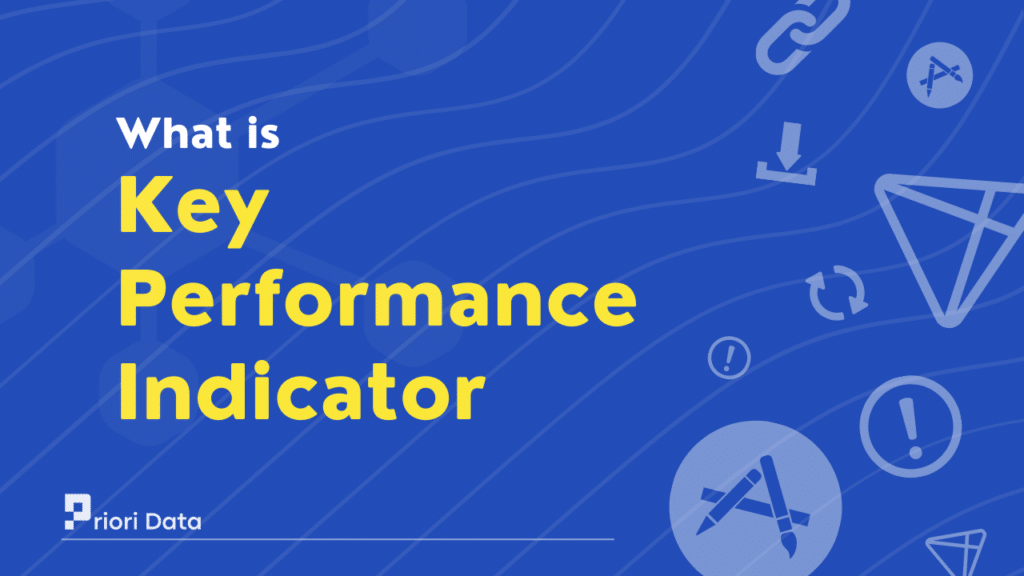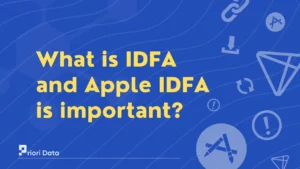Mobile applications are a crucial tool in today’s fast-paced world. But, developing a mobile app is only half the battle.
But how do we measure the success of a specific app? How do we know if our app is meeting its objectives?
The answer lies in Key Performance Indicators (KPIs). The real challenge lies in measuring its success and identifying areas for improvement.
A Key Performance Indicator (KPI) is a measurable value that measures the success of the app. It determines what is the efficacy of a company in achieving its business objectives. KPIs track and identifies the areas to improve for measuring their success.

In simple terms, a KPI is a metric that provides insights into how well an app is performing.
This can help them to make optimal decisions and for improving the app’s performance. KPIs can evaluate the success or failure of a campaign. They help businesses focus on the most important metrics and make data-driven decisions.
Why are KPIs Important?
KPIs are important as they provide a clear picture of how well their app was performing. They help to identify their strengths and weaknesses and show the areas that need to focus on.
By tracking KPIs, they can measure their app’s progress to meet their objectives. KPIs provide accurate data that can help to make optimal decisions. By analyzing KPI data, they can get an idea of where to invest their time and resources.
Finally, KPIs can help to identify areas that need improvement. By monitoring KPIs, they can know where they are falling short of their targets.
They can take proper action according to it to improve performance. This can help businesses to stay competitive and achieve long-term success.
What is the difference between a KPI and a metric?
A metric is a quantitative unit that measures the performance of the app. Metrics can measure anything from monthly revenue to conversions rate.
Metrics are objective, measurable, and they are often expressed in numerical terms. Examples of metrics include revenue, profit margin, conversion rate, bounce rate, and pageviews.
A KPI is a specific type of metric that measures the progress of an app toward a particular goal. KPIs are high-level, strategic indicators that provide insight into the app. They have a direct impact on the app’s success.
KPIs provide a clear, measurable target that can track progress. Examples of KPIs include sales growth, customer satisfaction, employee engagement, and market share. KPIs can check their success and can align them with the goals of the app.
What are some of the categories of KPIs?
1. Strategic KPIs
These KPIs are high-level, long-term goals that are critical to the success of a mobile app. These KPIs ensure that the app is meeting all the specific goals of the business. Examples of strategic KPIs include revenue growth, Lifetime value, and market share.
- Market share: The user’s percentage who have downloaded or engaged with your app.
- Lifetime value (LTV): The average revenue generated by a user over the lifetime of their use of your app. This KPI is critical to the success of a mobile app, as it directly impacts revenue and profitability.
2. Functional KPIs
These KPIs are specific to the performance of specific functions within the app. These KPIs are more focused on the app’s technical performance and user experience.
Examples of functional KPIs include response time, user engagement, and user retention rates.
- Response time: It measures the amount of time it takes to respond to user requests such as button clicks. This KPI is important for the development, as it helps them optimize the app’s performance.
- User retention: It measures the users who are using their app continuously over a time frame. High user retention rates are a strong indicator of a successful mobile app. As they suggest that users are finding value in the app and are likely to continue using it.
3. Operational KPIs
These KPIs measure the performance of the time frame that the app ensures runs smoothly.
These KPIs help to optimize their process and ensure delivery on time and within budget. Operational KPIs examples involve crash rate, app uptime, and DAU.
- Daily active users (DAU): This KPI measures the number of unique users who engage with the app on a daily basis. This KPI is a leading indicator of user retention and revenue growth.
- Crash rate: This KPI measures the percentage of app sessions that end in a crash or error. This KPI is important for the development as it helps them identify and fix bugs and issues.
4. Leading/Lagging KPIs
Leading KPIs are metrics that predict future trends and the performance of the app. These KPIs are forward-looking and help to look for opportunities. Leading KPIs examples involve user acquisition rate, daily installs, and usage rate.
Lagging KPIs evaluates past performance and determine the efficacy of previous actions.
These KPIs are retrospective and provide a historical perspective on the app’s performance. Examples of lagging KPIs include retention rate, customer satisfaction, and churn rate.
Examples of leading/lagging KPIs are:
- Average revenue per user (ARPU): It gives the average amount of revenue for each user over a given period. This KPI is a lagging indicator of user engagement and monetization.
- Session length: This KPI gives the average amount of time that users spend in the app during each session. This KPI is a leading indicator of user engagement and retention.
What is a good KPI?
A good KPI (Key Performance Indicator) is a metric that aligns with specific goals. It is measurable and provides actionable insights for improving performance. A good KPI should also be specific, relevant, achievable, and time-bound.
For example, let’s say a company wants to improve user engagement for their app. A good KPI for this goal could be the daily active users (DAU) metric.
The DAU metric measures the number of unique users who access the app on a daily basis. A good value for this KPI would depend on the company’s specific goals and benchmarks.
FAQs
Ques 1: Is KPI a SMART goal?
Ans. No, KPI (Key Performance Indicator) is not a SMART goal. But KPI measures the progress towards achieving SMART goals.
Ques 2: What are success indicators?
Ans. Success indicators are metrics that help determine the achievement of goals or objectives.
Ques 3: Is a target a KPI?
Ans. No, a target is not necessarily a KPI (Key Performance Indicator).
Ques 4: How is a KPI different from a goal?
Ans. A KPI (Key Performance Indicator) tracks their progress toward achieving a goal. While a goal is a specific objective that needs to get achieved.
Ques 5: How do you meet KPI targets?
Ans. It involves goals and implementing the tactics to achieve them in a certain time frame.






